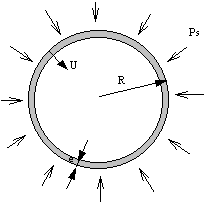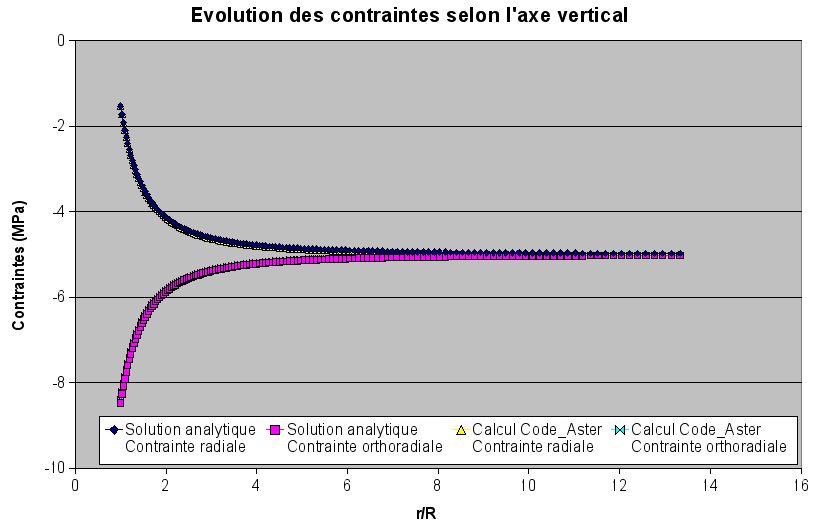8. Bibliography#
[1] D. BERNAUD and G. ROUSSET: The « new implicit method » for the study of the sizing of tunnels, Revue Française de Géotechnique no. 60, pp 5-26, - 1992
[2] P. CATEL: Aval du Cycle — Bure site — Site de Bure — Sheet 13 — Convergence-confinement method, note EDF TEGG EFT GG/00 168 A — 2000
[3] A. GIRAUD: Thermo-Hydro-Mechanical Couplings in poorly permeable porous media: application to deep clays, thesis from ENPC — 1993
[4] D. LE BOULCH: Comparison of the THM 3D and 2D models of a storage structure with the Code_Aster, report Ajilon Technologies CÉnergys 01-A — 2002
[5] M. PANET: The calculation of tunnels by the convergence-confinement method, Presses de l’ENPC — 1995
[6] N. SELLALI, C. CHAVANT and G. DEBRUYNE: Hydroplastic modeling of the excavation of an underground gallery with the Code_Aster, note EDF MMN HI-74/00/009/A — 2000
[7] N. SELLALI, C. CHAVANT and G. DEBRUYNE: THM modeling of an underground storage structure with the Code_Aster, note EDF MMN HI-74/01/014/A — 2001
Analytical formulas to apply the convergence-confinement method in the case of an elastic and linear rock mass and support
The medium is assumed to be isotropic linear elastic and subject to an initial stress field that is also isotropic (\({K}_{0}\mathrm{=}1\)).
Radial stress, orthoradial stress and radial displacement at the tunnel wall in an elastic medium subject to a deconfinement rate \(\mathrm{\lambda }\)
\(\{\begin{array}{}{\sigma }_{R}=(1-\frac{\lambda \text{.}{R}^{2}}{{r}^{2}})\text{.}{\sigma }^{0}\\ {\sigma }_{\mathrm{\theta }}=(1+\frac{\lambda \text{.}{R}^{2}}{{r}^{2}})\text{.}{\sigma }^{0}\\ {U}_{R}=\lambda \cdot \frac{{R}^{2}}{r}\cdot \frac{{\sigma }^{0}}{\mathrm{2G}}\end{array}\)
\(G\) is given by the following relationship: \(G=\frac{E}{2\cdot (1+\mathrm{\nu })}\)
Support behavior:
Let \({K}_{s}\) be the stiffness of the support, it is given by the following relationship if we consider that the support is comparable to a thick or thin tube (\({\nu }_{b}\) is the Poisson’s ratio of concrete):
\({K}_{s}\mathrm{=}\mathrm{\{}\begin{array}{cc}\frac{{E}_{b}\mathrm{\cdot }e}{(1\mathrm{-}{\nu }_{b}^{2})\mathrm{\cdot }R}& \text{si}R>\text{10}\mathrm{\cdot }e\\ \frac{{E}_{b}\mathrm{\cdot }({R}_{e}^{2}\mathrm{-}{R}_{i}^{2})}{(1+{\nu }_{b})\mathrm{\cdot }\left[(1\mathrm{-}2\mathrm{\cdot }{\nu }_{b})\mathrm{\cdot }{R}_{e}^{2}+{R}_{i}^{2}\right]}& \text{si}R\mathrm{\le }\text{10}\mathrm{\cdot }e\end{array}\)
Let \({P}_{s}\) be the confinement pressure defined in the following figure

So we have:
\({P}_{s}\cdot R={\mathrm{\sigma }}_{b}\cdot e\)
If \({k}_{s}=\frac{{K}_{s}}{2\cdot G}\) represents the relative stiffness and \({\lambda }_{d}\) the deconfinement rate when the support is put in place, then the support pressure and the radial displacement in the wall are given by:
\(\{\begin{array}{}{P}_{s}=\frac{{k}_{s}}{1+{k}_{s}}\cdot (1-{\lambda }_{d})\cdot {\sigma }^{0}\\ {U}_{R}=\frac{1+{\lambda }_{d}\cdot {k}_{s}}{1+{k}_{s}}\cdot \frac{{\sigma }^{0}}{2\cdot G}\cdot R\end{array}\)
Summary flow chart on methods to simulate an excavation
Notes
The names of the objects are those of the command files shown in the following appendices.
\(\mathit{SNL}\) means STAT_NON_LINE; \(\mathit{CC}\) means CREA_CHAMP; \(\mathit{CL}\) means boundary conditions
Comparison of the constraints obtained by numerical calculation and by the analytical solution
Unsupported tunnel case
Case of supported tunnels (from 50% of deconfinement)
